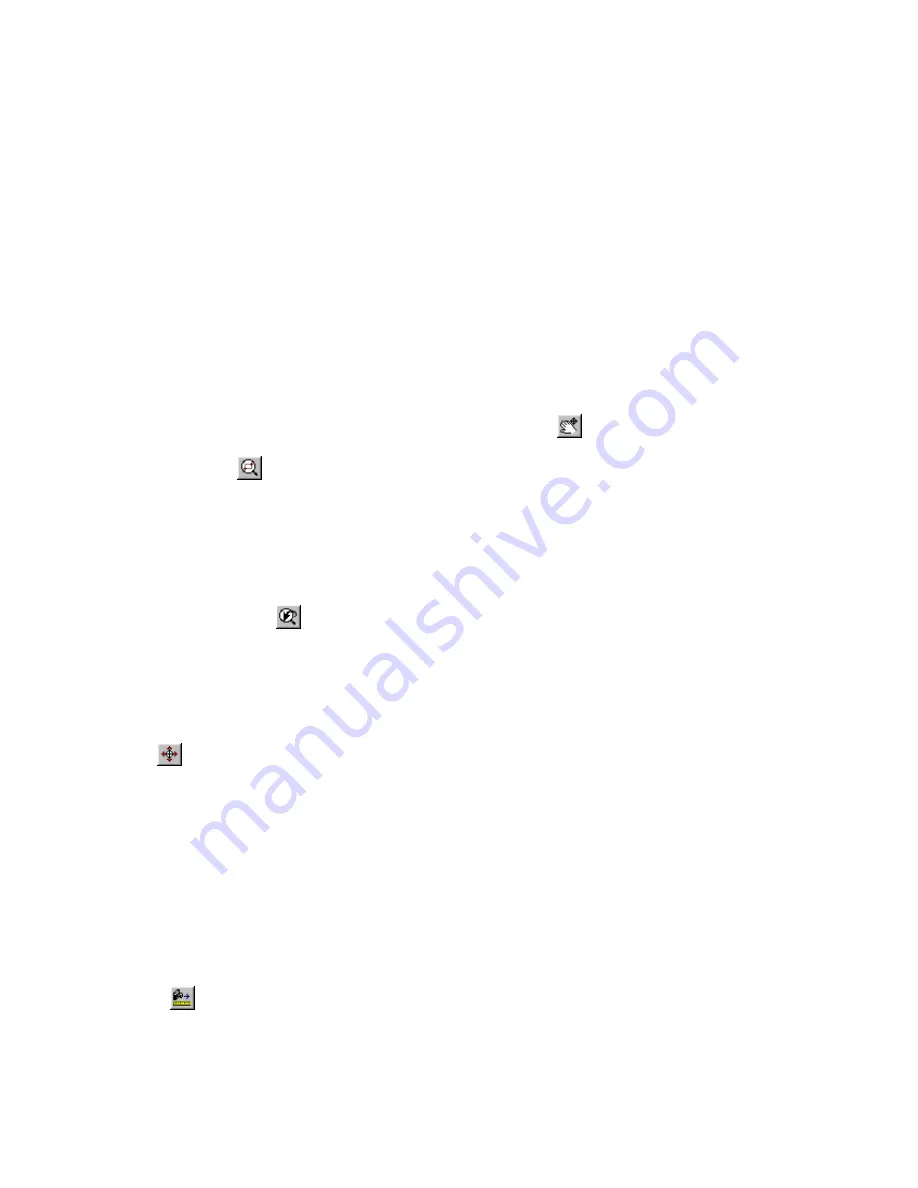
Viewing the Model
31
❚❘❘
To use the Zoom view control:
1.
To zoom in on the scene (decrease the field of
view), drag the mouse upward in the Graphic win-
dow.
2.
To zoom out on the scene (increase the field of
view), drag the mouse downward in the Graphic
window.
Note:
In Perspective view, excessively zooming
out leads to distortions in the image (similar to a
wide-angle lens on a camera).
Zoom is available in all projections.
Zoom Window
Use Zoom Window
to zoom in to an area. Drag
the cursor to draw a marquee in the Graphic window
to zoom directly to that area.
Zoom Window is available in all projections.
Undo Zoom Window
Use Undo Zoom Window
to restore the view to
the one used before the last Zoom Window opera-
tion. This option supports a maximum of ten levels
of undo.
Pan
Use Pan
to pan the model in the direction of the
mouse movement. This has an effect similar to
moving the point of view and focus point along a
horizontal or vertical axis. The viewer position and
the focus point are moved together in the direction
opposite to the direction you are dragging, so that
the model appears to move with the mouse.
Pan is available in Perspective view only.
Dolly
Use Dolly
to move the viewer position forward
or backward along the view path.
To use the Dolly view control:
1.
To move the viewer position forward, drag the
mouse upward in the Graphic window.
2.
To move the viewer position backward, drag the
mouse downward in the Graphic window.
Note:
You cannot dolly past the focus point. The
dolly speed depends on the distance to the focus
point.
Dolly is available in Perspective view only.
Scroll
Use Scroll
in orthographic projections to cause
the same effect as Pan in Perspective view.
In Perspective view, Scroll behaves differently.
Unlike the other view options, Scroll does not alter
the Perspective projection. Any lines that appeared
parallel before scrolling remain parallel after
scrolling. The result of a scroll is an off-center
projection.
It is generally difficult to predict the behavior of an
off-center projection. If your camera behaves
strangely when zooming about a point not at the
center of the window (for example), it has probably
been scrolled.
In architectural photography, you often use a
perspective correction lens to maintain parallel
vertical lines in the image. To obtain this effect in
Lightscape, first set a specific perspective view with
the camera position and focus point at the same
height, and then scroll the resulting view to adjust
the image plane, as needed.
Scroll is available in all projections.
Summary of Contents for LIGHTSCAPE
Page 1: ...SULO 4 31 93 36034333308355 LJKWVFDSH...
Page 18: ...NOTES 10...
Page 110: ...NOTES 102...
Page 136: ...NOTES 128...
Page 166: ...NOTES 158...
Page 176: ...NOTES 168...
Page 202: ...NOTES 194...
Page 210: ...NOTES 202...
Page 248: ...NOTES 240...
Page 294: ...NOTES 286...
Page 308: ...NOTES 300...
Page 316: ...NOTES 308...
Page 324: ...NOTES 316...
Page 342: ...Glossary 334 Lightscape...
Page 360: ...Index ix 352 Lightscape...
Page 362: ......






























